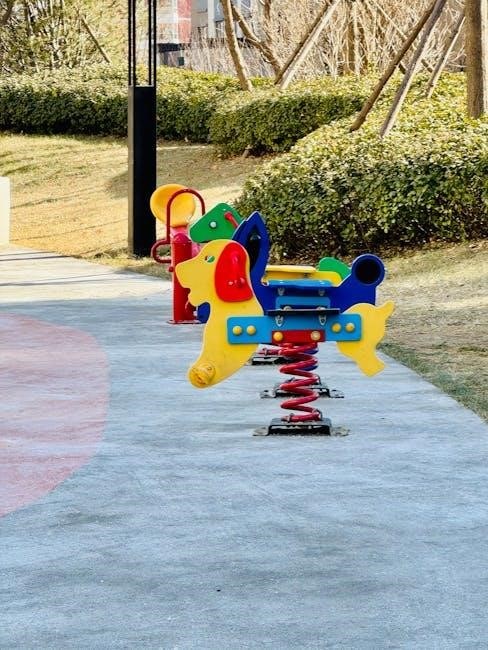
Container Exercise: A Comprehensive Guide
The container exercise is a technique designed to help individuals manage distressing feelings and memories. It involves creating a metaphorical container to hold these difficult emotions, providing a sense of control and safety. This exercise is adaptable and can be used anytime.
Understanding the Container Exercise
The container exercise is a valuable tool for managing overwhelming emotions and intrusive memories. It provides a structured way to contain and process difficult experiences, promoting a sense of control and emotional regulation. This exercise is particularly useful for individuals struggling with anxiety, trauma, or intense emotional distress, offering a safe space to acknowledge and manage their feelings.
The core principle involves visualizing a container—a mental space where disturbing thoughts, feelings, and memories can be temporarily stored. This container acts as a buffer, preventing these elements from overwhelming the individual. The exercise emphasizes that the container is secure, strong, and capable of holding the distressing content until the individual is ready to address it. The “stuff” contained is different for everyone.
By using the container exercise, individuals can create a sense of distance from their emotional pain, allowing them to function more effectively in their daily lives. It is a proactive approach to managing mental health, empowering individuals to take charge of their emotional well-being and develop coping mechanisms that promote resilience and stability.
Purpose of the Container Exercise
The primary purpose of the container exercise is to provide individuals with a tangible method for managing overwhelming emotional distress. By creating a mental “container,” individuals gain a sense of control over intrusive thoughts, feelings, and memories that may be causing them significant discomfort. The exercise serves as a temporary holding space, preventing these distressing elements from disrupting daily functioning.
Another key objective is to promote emotional regulation. By consciously placing disturbing “stuff” into the container, individuals can create distance between themselves and their emotional pain. This distance allows for a more objective perspective, making it easier to process difficult experiences without being overwhelmed. The exercise encourages a proactive approach to mental health, fostering resilience and coping skills.
Furthermore, the container exercise aims to enhance feelings of safety and security. The container is designed to be strong and secure, assuring the individual that their distressing content is contained and will not escape without their permission. This sense of security is crucial for individuals who have experienced trauma or are struggling with intense anxiety, providing them with a safe space to manage their emotions.
Key Characteristics of a Mental Container
A mental container, crucial in the container exercise, possesses several key characteristics that contribute to its effectiveness. First and foremost, it must be strong enough to hold whatever is placed inside. This strength symbolizes the individual’s ability to manage and contain their distressing emotions and memories without being overwhelmed. The container’s durability provides a sense of security and control.
Another vital characteristic is the presence of a two-way valve system. This mechanism allows for controlled access to the contents of the container, enabling individuals to process their emotions at their own pace. The valve can be opened to examine and address specific issues or closed to maintain a sense of containment when needed. This feature promotes a sense of agency and self-regulation.
The container should also be personalized to the individual’s preferences and needs. This personalization enhances the sense of ownership and control, making the container more effective. This may involve choosing a specific shape, size, color, or material that resonates with the individual, further solidifying its role as a safe and secure holding space for difficult emotions.
Steps to Constructing a Container
Constructing a mental container involves a series of steps designed to create a safe and effective space for managing distressing emotions and memories. The initial step involves identifying the specific feelings or memories that you wish to contain. This requires acknowledging and naming the emotions, such as anxiety, fear, or sadness, and pinpointing the associated memories or images.
Next, design your container. Visualize its appearance, considering its size, shape, color, and material. The container should be strong and secure, capable of holding the identified emotions and memories without breaking or leaking. Imagine the container as a physical object, paying attention to its texture and weight.
Then, incorporate a two-way valve system into your container design. Visualize a mechanism that allows you to control access to the contents. This valve can be opened to examine and process the emotions or closed to maintain containment when needed. Practice opening and closing the valve in your mind, familiarizing yourself with its function.
Finally, practice using your container. Imagine placing the identified feelings and memories inside, securing them within the container. Visualize closing the valve, knowing that you can access them later when you feel ready. Repeat this process regularly to strengthen your ability to contain distressing emotions.
Identifying Disturbing Feelings and Memories

The initial step in effectively utilizing the container exercise lies in the accurate identification of the specific disturbing feelings and memories that require containment. This process involves a conscious effort to acknowledge and name the emotions and experiences that are causing distress. Start by taking a moment to pause and reflect on your current emotional state. Pay close attention to any feelings of anxiety, fear, sadness, anger, or shame that may be present.
Once you have identified the predominant emotions, try to trace them back to their source; What specific memories, images, or thoughts are triggering these feelings? It may be helpful to write down a list of these disturbing elements, providing a clear and tangible representation of what needs to be contained. Be as specific as possible, noting the details of the memories, including the people involved, the setting, and the events that occurred.
Furthermore, consider any physical sensations that accompany these emotions and memories. Do you experience tension in your muscles, a racing heart, or a knot in your stomach? Acknowledging these physical manifestations can further enhance your understanding of the disturbing elements that need to be addressed through the container exercise. This process of identification is crucial for effectively utilizing the container technique.
Designing Your Container
The next crucial step in the container exercise involves designing your own mental container. This container will serve as a safe and secure space to hold the disturbing feelings and memories you have identified. The design of the container is entirely up to you, allowing for creativity and personalization. Consider what qualities and characteristics would make you feel most secure and in control.
Visualize the container in your mind’s eye. What shape is it? What size is it? What materials is it made of? Some people prefer a sturdy, impenetrable box, while others might envision a more flexible and adaptable container, like a bubble or a flowing river. The key is to choose a design that resonates with you and provides a sense of safety. Think about the container’s features. Does it have a lid or a door? Does it have any special locks or protective mechanisms?
You might also consider the container’s location. Where is it situated? Is it in a peaceful and serene environment? Is it in a secure and protected place? The location of the container can further enhance its sense of safety and containment. Remember, there are no right or wrong answers when it comes to designing your container. The most important thing is that it feels like a safe and effective tool for managing your disturbing feelings and memories.
Using the Two-Way Valve System
A key component of an effective container is the two-way valve system. This system allows you to control the flow of emotions and memories in and out of the container, providing a sense of agency and control. The two-way valve system is essential for managing the intensity of disturbing feelings and memories and preventing them from overwhelming you. Imagine the container having a valve or opening that you can control.

When you are feeling overwhelmed, you can visualize placing the disturbing feeling or memory into the container and closing the valve, effectively containing it. This allows you to create a safe distance from the emotion and prevent it from disrupting your daily life. Conversely, when you feel ready to process a particular feeling or memory, you can visualize opening the valve and allowing a small amount of it to flow out.
This controlled release allows you to gradually work through the emotion without becoming overwhelmed. It’s crucial to remember that you are in control of the valve. You can open it as much or as little as you feel comfortable with. The two-way valve system gives you the power to manage your emotions and memories at your own pace. This controlled approach fosters a sense of safety and empowers you to actively engage in your healing process.
Applying the Container Exercise in EMDR Therapy
The container exercise is a valuable tool that can be effectively integrated into Eye Movement Desensitization and Reprocessing (EMDR) therapy. EMDR therapy aims to process traumatic memories and reduce their emotional impact, but sometimes, clients may find it challenging to manage the intensity of emotions that arise during sessions. The container exercise can provide a sense of safety and control, enabling clients to engage more effectively in the EMDR process.
Before beginning EMDR processing, the therapist can guide the client in creating their mental container, helping them visualize its characteristics and practice using the two-way valve system. This way, if the client becomes overwhelmed during processing, they can use the container to safely contain the distressing feelings or memories. It is important to note that while the container exercise can provide safety and control, it may also slow down the EMDR processing.
The therapist should carefully monitor the client’s progress and adjust the use of the container exercise accordingly. The ultimate goal is to help the client process their trauma and reduce its impact, and the container exercise can be a valuable tool in achieving this goal. By providing a sense of control and safety, the container exercise can empower clients to engage more fully in EMDR therapy and work towards healing.
Benefits of the Container Exercise

The container exercise offers a multitude of benefits for individuals struggling with distressing emotions and memories. Primarily, it provides a sense of control over overwhelming feelings, allowing individuals to manage their emotional state more effectively. By visualizing a secure container, individuals can create a mental space to hold difficult emotions, preventing them from feeling completely overwhelmed. This is especially helpful for individuals who experience intense anxiety, intrusive thoughts, or traumatic memories.
Furthermore, the container exercise promotes emotional regulation by providing a structured way to process and contain distressing feelings. The two-way valve system allows individuals to gradually release emotions from the container at their own pace, preventing them from becoming overwhelmed. This can lead to a greater sense of emotional stability and resilience.
The container exercise can be used in various settings, including therapy sessions and self-help practices, making it a versatile tool for managing emotional distress. Its adaptability allows individuals to customize the exercise to their specific needs and preferences, further enhancing its effectiveness. Ultimately, the container exercise empowers individuals to take control of their emotional well-being and develop healthier coping mechanisms for dealing with challenging experiences.
Container Exercise Script Example
“Let’s begin by finding a comfortable position, closing your eyes gently if you feel safe to do so. Take a few deep breaths, allowing yourself to relax more with each exhale. Now, imagine a container in your mind’s eye. This container can be any shape, size, or color you desire. It should feel strong and secure, capable of holding whatever you place inside.
Think of a disturbing feeling or memory that you’d like to manage. It could be a worry, a difficult emotion, or a past event. As you bring this feeling or memory to mind, notice where you feel it in your body. Acknowledge the feeling without judgment, simply observing it.

Now, visualize yourself carefully placing this feeling or memory into your container. See it settling inside, contained and separate from you. Know that you can safely store it here, and it will not harm you.
Imagine a two-way valve on your container. This valve allows you to release the contents gradually, at a pace that feels comfortable for you. If you wish, you can open the valve slightly, allowing a small portion of the feeling or memory to release. Observe what happens as it dissipates, knowing that you are in control. You can close the valve again whenever you need to, ensuring your own safety and comfort.
Remember, this container is your safe space. You can return to it whenever you need to manage difficult feelings or memories.
”